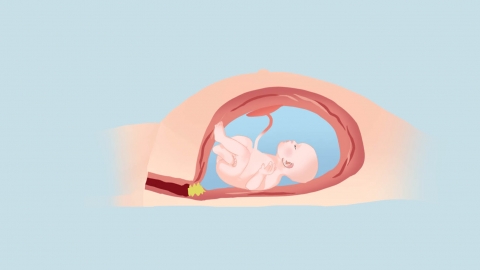What does abnormal fetal position mean?
Generally, abnormal fetal position refers to a situation where the fetus's position within the uterus does not conform to the normal position for delivery. A detailed explanation is as follows:

The normal fetal position is cephalic presentation, meaning the fetal head is facing downward with the occiput near the anterior part of the mother's pelvis. Abnormal fetal positions include breech presentation, transverse lie, oblique lie, and others. Abnormal fetal positioning may result from uterine developmental abnormalities, such as uterine malformations or uterine septum, which affect the fetus's normal movement and natural adjustment of position within the uterus. It may also be caused by fetal factors such as a small fetal size, excessive amniotic space, or multiple pregnancies, which prevent the fetus from maintaining a normal position. Additionally, abnormal placental position can also influence fetal positioning.
Abnormal fetal positions may increase the difficulty and risks of delivery. For example, during breech delivery, the fetal buttocks and lower limbs are delivered first, which may lead to difficulties delivering the head afterward, increasing the risks of neonatal asphyxia and birth injuries. If a transverse lie is not managed promptly, it may cause serious complications such as uterine rupture.
Pregnant women can engage in moderate exercise under a doctor's guidance, such as walking or prenatal yoga, to help the fetus move within the uterus and facilitate natural adjustment of fetal position. However, attention should be paid to the intensity and frequency of exercise to avoid excessive fatigue.




